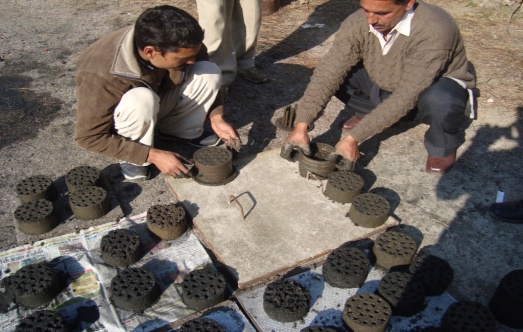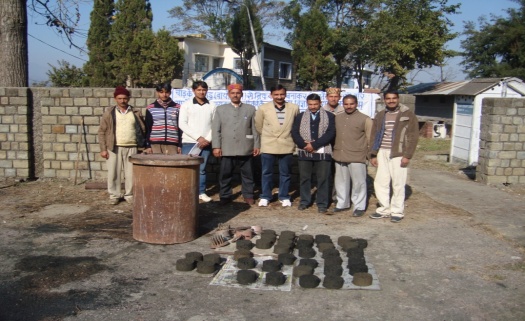|
Forest Waste Biomass Conversion into Briquettes
|
|
Pine Needles and Other Forest waste Biomass
|
Introduction
Millions of tons of biomass gets generated from forest residues especially pine needles. These pine needles if not removed from the ground can cause a lot of damage to the environment due to their highly inflammable nature. A pine tree trunk is heat resistant, hence in case of a forest fire, pine trees survive the fire but in the process destroy the growth of other plant species. Dry pine foliage also stops water from being absorbed by the soil and thus causes the depletion of ground water table. Fallen dry pine foliage blocks the sunshine reaching the ground and thereby stops the growth of grass which the cattle feed upon. Although dry pine needles and other forest residues have high cauliflower value, this biomass cannot be used directly due to its low bulk density and high moisture content.
|
Equipments Required
1) Drum with lid, 200 Lit.
2) Stove for burning Briquettes.
3) Mould for casting Briquettes.
|
Material Required
1) Pine Needles
2) Clay
|
Preparation of the Briquettes
Dry the biomass collected in open air for ten days to reduce moisture content of the material. Carbonization: For carbonization, loosely pack the collected biomass into the Drum. The Drum will accommodate ~25 kg dry biomass. After loading the biomass into the drum in layers, close top of the drum with metal lid after removing conical chimney. The briquettes will take 2-4 days for drying. These briquettes burent in special design stove. After mixing the carbonised biomass with clay soil and adding water in the mixture , it can be converted into briquettes with the help of mould .
|
Methods
Biomass collection – Drying – Carbonization –Binding material – Briquetting -- Drying
Time cycle of one batch carbonization
Process -- duration
Loading -- 30 minutes
carbonization -- 60 minutes
Unloading -- 30 minutes
Total process time -- 7 hrs
|

Trainees Casting Pine Briquettes
|

Training Programme on Pine Briquetting
|
|
|